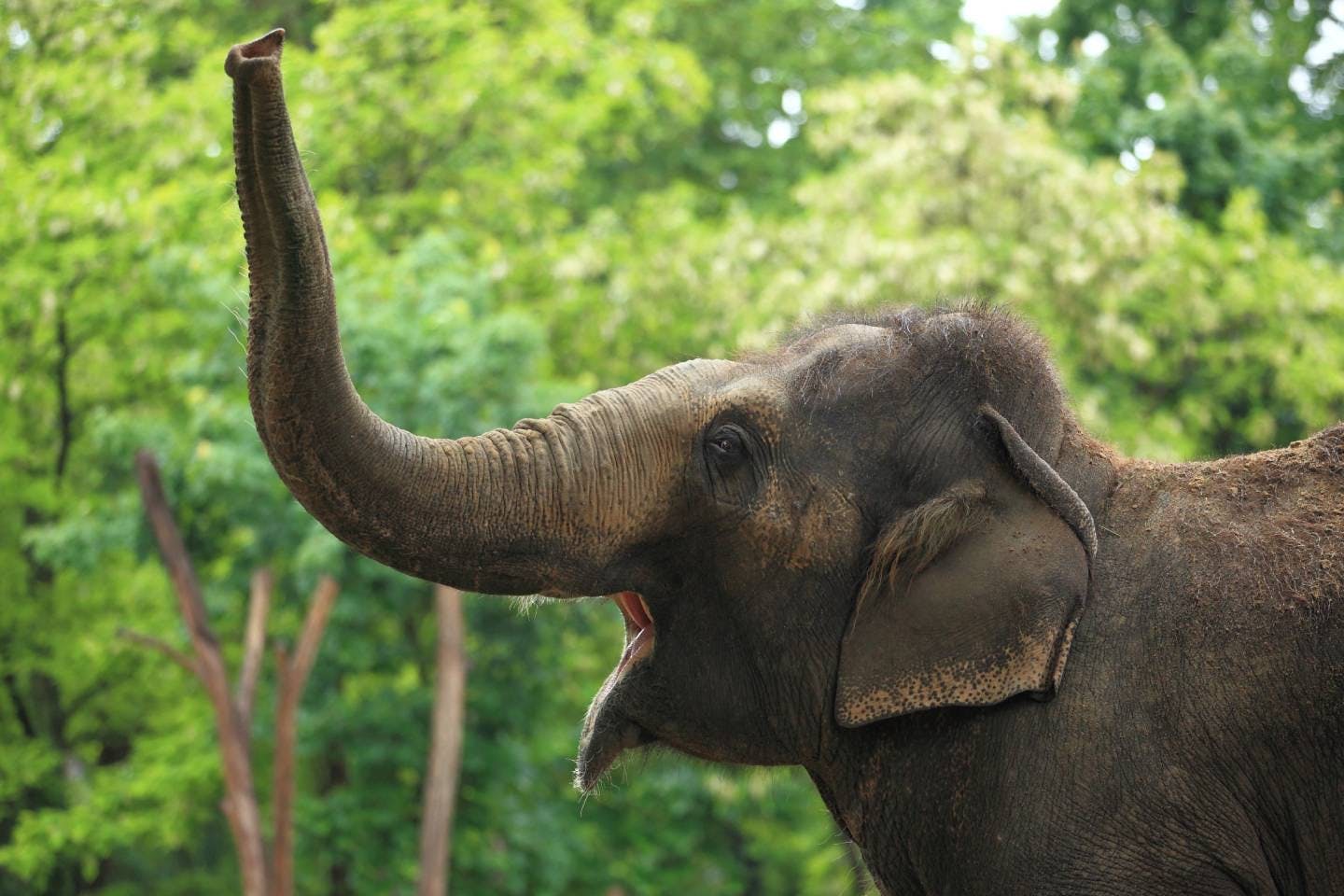Asian elephants: highly intelligent caretakers of the Southeast jungles
One Earth’s “Species of the Week” series highlights the flagship species of each of the 844 unique ecoregions contained within Earth’s bioregions.
Perhaps one of the most cognitive species on Earth is not found in a laboratory or behind a desk but rather roaming in the grasslands and tropical evergreen and deciduous forests of Southeast Asia and India. Asian elephants have a highly developed neocortex, or “thinking part” of the brain, which helps them form relationships and problem solve as they act as gardeners in their ecosystem.

Asian elephants are the flagship species of the South Deccan Plateau Dry Deciduous Forests ecoregion, located in the Greater Deccan-Sri Lankan Forests & Drylands bioregion (IM8).
Different from African elephants
The largest living land animal in Asia, Asian elephants are on average 6.4 meters (21 ft) in length, 2 to 3.5 meters tall (6.5–11.5 ft), and weigh around 5,000 kilograms (11,000 lbs). They are larger than African forest elephants but smaller in size than African bush elephants and stand out from both, having smaller, more modestly shaped ears.
Their feet also differ from African elephants, for Asian elephants have more nail-like structures, with five on each forefoot and four on each hindfoot. This gives them the ability to better use their feet in conjunction with their trunk for manipulating objects. Like all elephant species, Asian elephant trunks don’t have bones or joints but are made up of as many as 60,000 muscles.
Male Asian elephants grow tusks that can act as weapons or protection against other elephants or predators but mainly serve to debark trees, dig for water, and as levers for lifting fallen branches. Elephants are known to be right or left tusked.
Social gardeners of the jungle
Tusks, trunks, and a tremendous stature aid the species and their surrounding habitat. More than two-thirds of an elephant's day is spent feeding on grasses, tree bark, roots, leaves, and stems, which they accomplish by using their size to uproot. The trampling and pruning of the forest allow new vegetation to take the place of older ones, replenishing the jungle for all.
Extremely socially, female Asian elephants live in groups of six to seven related individuals led by the oldest female, the matriarch. Adult males, known as bulls, tend to roam on their own until breeding.
Elephants have the most prolonged pregnancy of any mammal at almost 22 months. Females, or cows, give birth to one calf every two to four years. At birth, calves weigh around 91 kilograms (200 lb) and stand about a meter tall (3 ft). Like humans, baby elephants lose their first set of teeth in adolescence.

Image credit: Courtesy of Sanjiv Fernando
Smart, sassy, and revered
Along with humans, apes, and certain dolphin species, Asian elephants have a very large and developed neocortex and possess a greater volume of cerebral cortex available for cognitive processing than other land animals. Several researchers of elephant neuroanatomy are convinced that the species is highly intelligent and self-aware.
Observations show Asian elephants exhibit various emotions, including grief, compassion, and even a little bit of sass as they mimic one another in play. They have also been shown to use tools and language and have extensive memory.
In Asia and throughout the world, elephants are significant in culture. Among Hindus, the elephant-headed Ganesha is a powerful deity honored before all sacred rituals and is known as the “Remover of Obstacles,” the patron of arts and sciences, and the god of intellect and wisdom.
They need our help to survive
Since 1986, the Asian elephant has been listed as endangered in conservation status as the population has declined by at least 50% over the last three elephant generations. Fewer than 50,000 are left in the wild, primarily due to habitat loss, degradation, fragmentation, and poaching.
A project led by Wild Earth Allies is working to protect 1.7 million acres of Asian elephant habitat across Cambodia. With their efforts and philanthroactivism, or support from everyday people, this iconic and intelligent species can be saved.
Protect Asian Elephants


